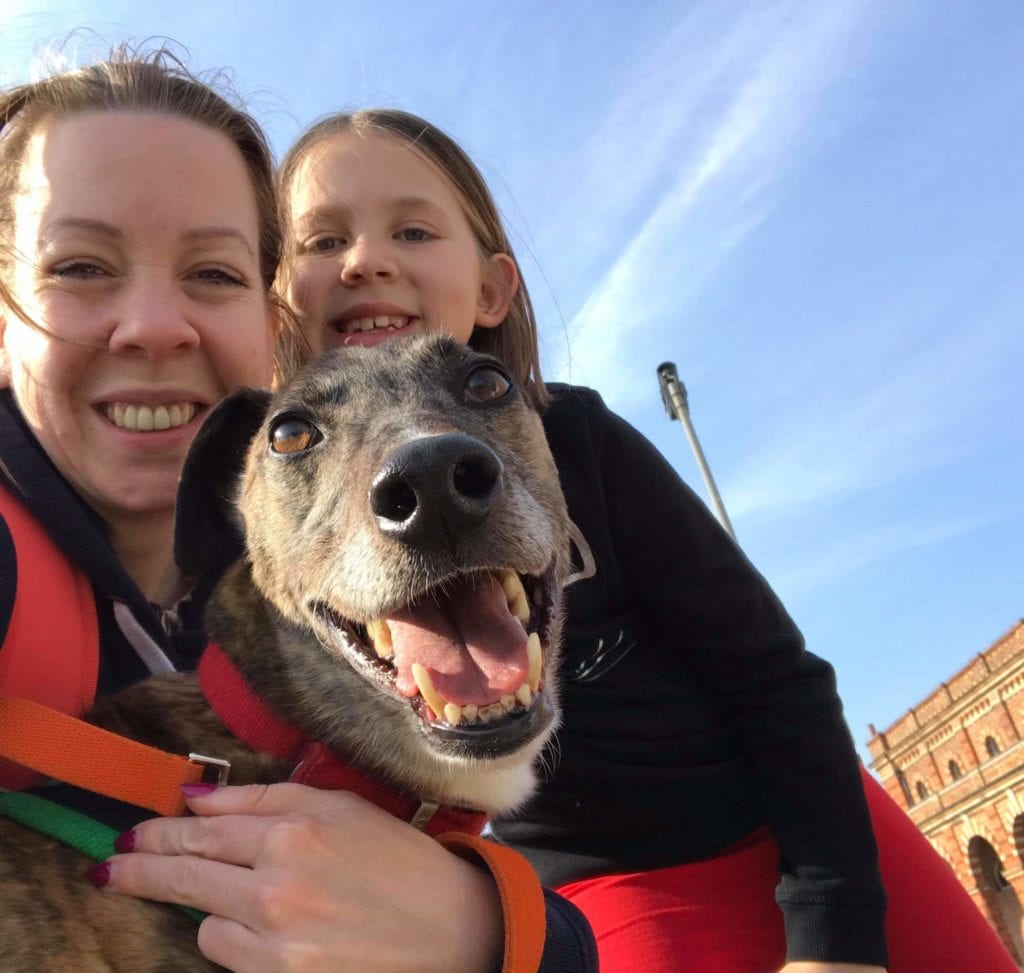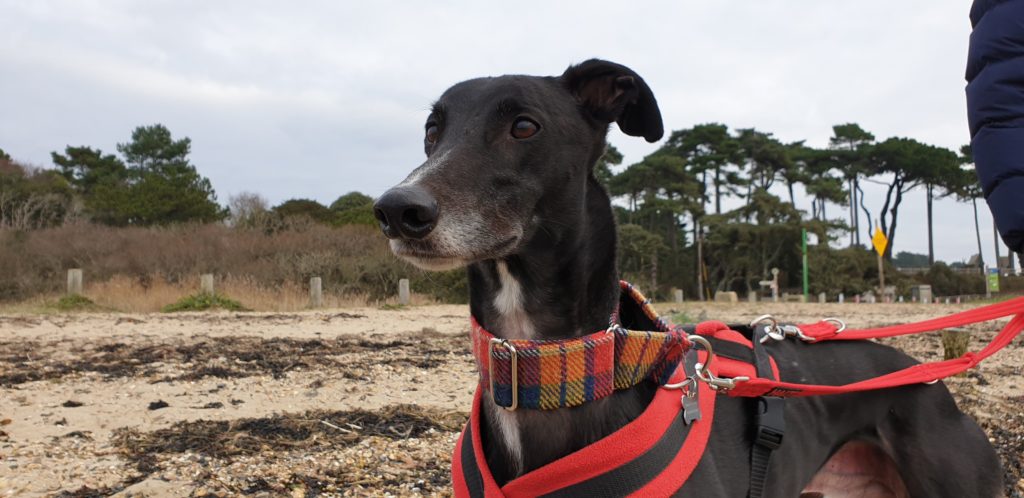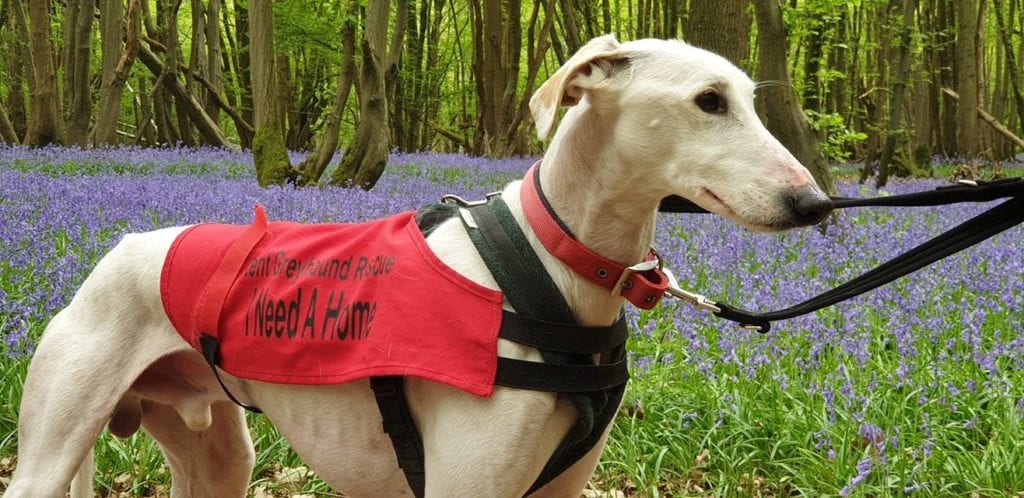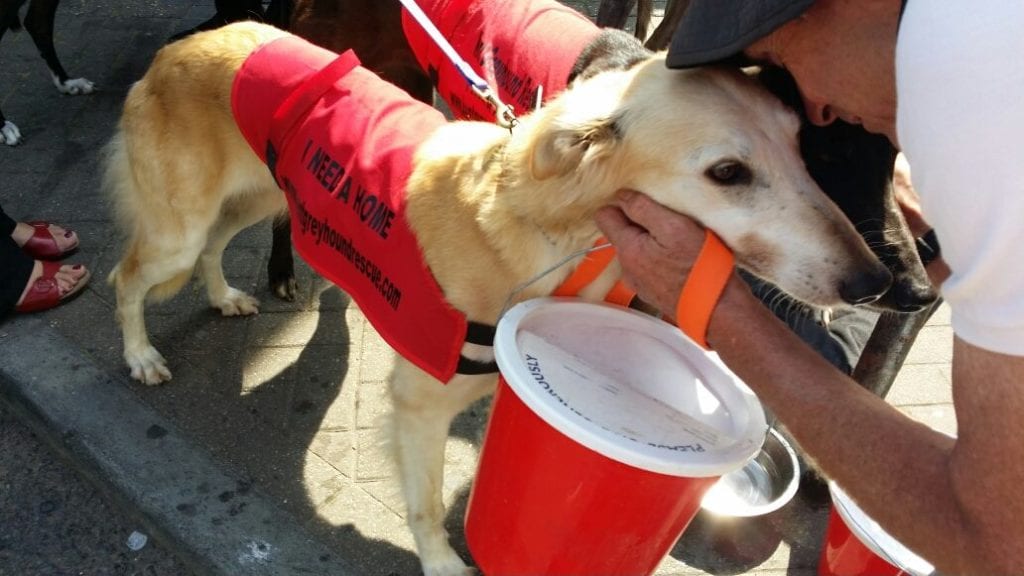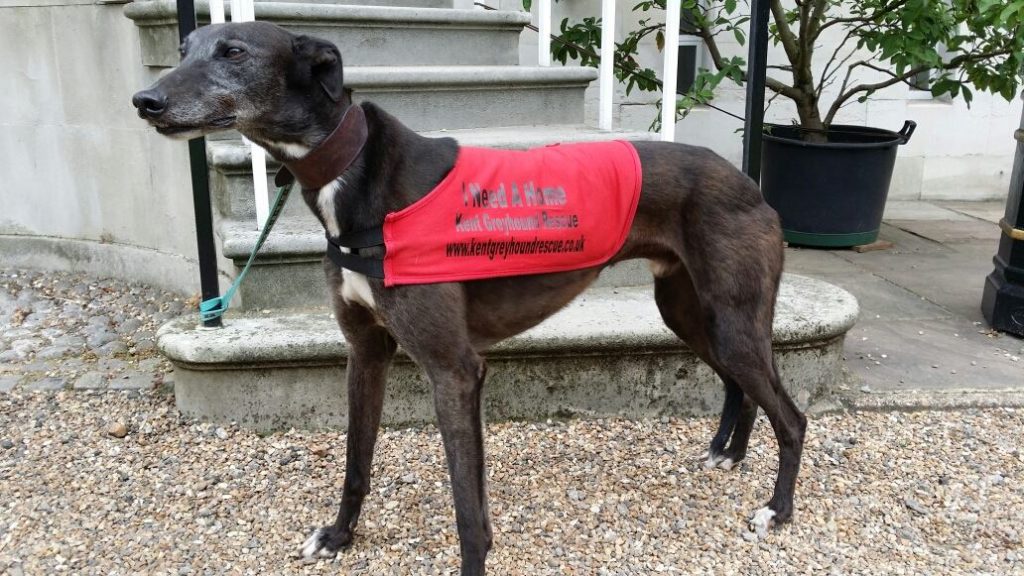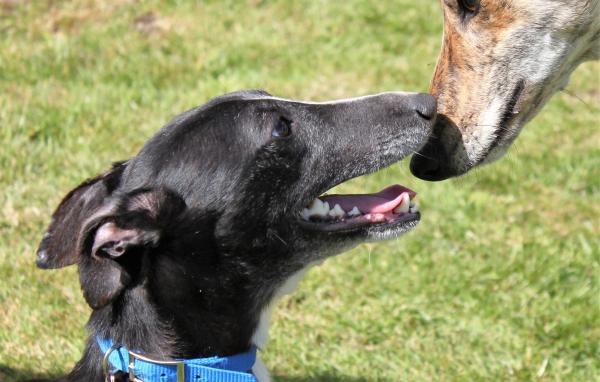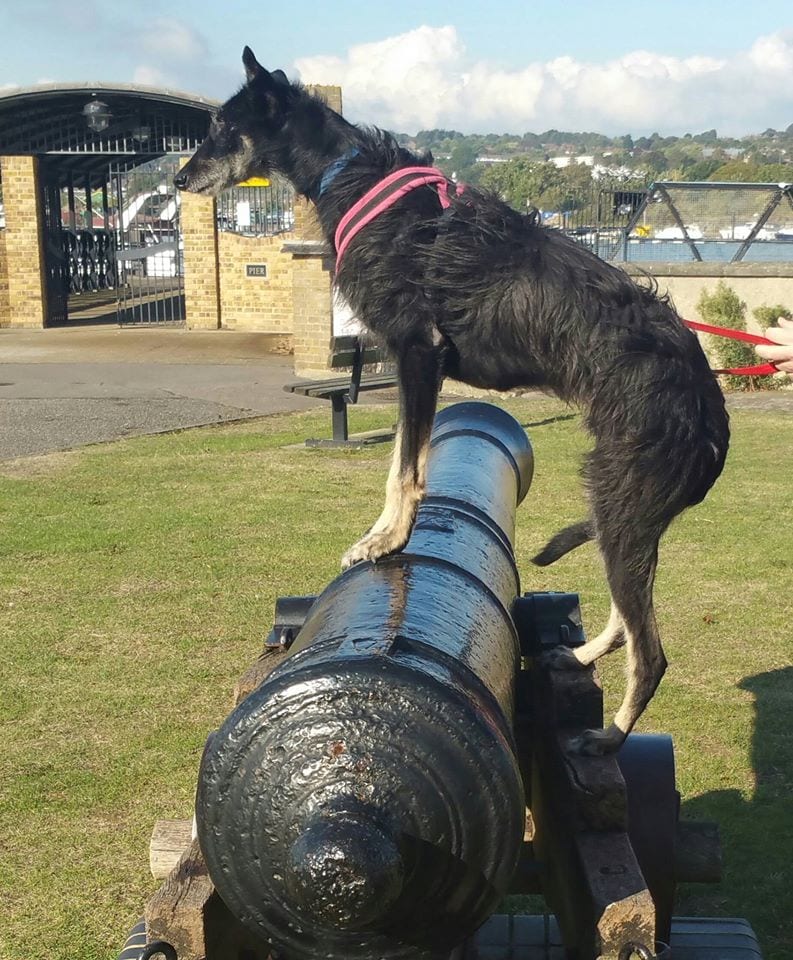Do you think your dog has separation anxiety? Most dogs are more than happy being left alone but occasionally some cannot cope well.
What is greyhound and lurcher separation anxiety?
Do you think your dog has separation anxiety? Most dogs are more than happy being left alone but occasionally some cannot cope well. Separation anxiety is the term used to describe a dog that is distressed when separated from humans or another dog. Some may refuse to sleep and others may bark and chew, or even whine, howl, mess. This generally means leaving them, for even short periods, is very difficult.
It is easy to mistake for other problems, including:
- Separation frustration; and
- ‘Maybe they are hiding’ frustration.
Your dog is more likely to be suffering from the above than true separation anxiety.
The advice below is aimed at a working family that needs to leave their dog every day, but it should help all owners understand the problem and identify possible solutions. You will also need adapt the exercise advice for older or underweight / lame dogs …..obviously.
Separation Frustration
Separation frustration is the term used to describe a bored dog, or even a dog that does not want to be left behind. He doesn’t know that you have gone to work. Perhaps he wonders if you have gone out for a walk in the woods, with all his friends and sausages in your pocket. He wants to go with you! He shouts at you to wait for him, and when you don’t come back he eats the cushion.
This is normally an easy problem to deal with, especially if you have a greyhound, and you can stop it happening if you start training from day one. The trick is routine and a tired dog …… and a newly rehomed greyhound is normally easy to tire out.
Before your dog arrives home you should agree the routine with your family. A long walk before work (perhaps and hour or so), a lunch time stroll or stretch in the garden and another short walk after work would be a good starting routine. Don’t forget to get out for adventures during the weekend too – new places and smells are great for tiring the brain.
Routine and exercise are key to making this work
The above routine might be too much for a very unfit dog so be sensible – you can swap marching for an amble if necessary and a rest in the grass, but do put the time in – outdoors with your dog. Swapping a walk for playing, chasing or running during the initial settling in period won’t work. You want to leave a calm dog, not an over stimulated dog.
Don’t be frightened ….. you will be able to adjust the times and the amount of exercise after a few weeks once the dog is settled and content. It is the walk before you leave the dog that is most important.
‘Maybe they are hiding’ frustration
It is important to think about where you are going to leave your dog. If you ensure your dog is tired you can avoid the ‘hiding’ frustration. Please make sure the TIRED dog can see you put on your coat, pick up your keys and leave the house. If your dog will be left wondering and listening, if he is not sure if you have gone.. He might bark and become frustrated.
It is normally good to restrict your dog’s freedom to roam around the house when you are not there. He should be sleeping not strolling from room to room when you are not home. A safely designed pet gate is a great way to restrict his access and keep him safe, while still giving him a visual interaction with the house beyond the room.
Other tips for greyhound and lurcher separation anxiety
- It might help to leave your dog with safe chew toys such as a nylon bone, or a filled kong. A radio or television left on can sometimes help too.
- Using a crate may help your dog settle. Never crate your dog for more than a few hours.
- Never break your promises. It is important that your dog can absolutely trust in your routine. That means don’t pop in to visit a friend on the way home from work, or have a quick drink with your work colleagues. Go home on time. Always.
- If you work full time or are away a lot of the time choose an older dog! Puppies and adolescent dogs are evolutionally programmed to seek the safety of a pack.
- It isn’t normally a good idea to take a long period off work to settle your dog because he will simply learn to expect you to be around. Practice separation from day one. It is ideal if you can build up the time over a week or so. Don’t forget to ensure your dog has an opportunity for a leg stretch and toilet break during the day if you work full time.
Don’t forget a tired dog is a less stressed dog!
- Lots of exercise in the first few weeks will also help your dog to sleep alone if that is your preference. (Although many will try their luck by whining or barking for a short time). It is never a good idea to leave a dog to cry at night for long periods if his instincts mean he feels safer sleeping with you. While some dogs might resign themselves to sleeping alone eventually, others will simply learn to be anxious. You won’t cause separation problems by letting him sleep with you. However, you could increase anxiety by ignoring a stressed dog. If you really don’t want a dog sleeping in your room, then you could sleep in the same room as him for a few days until he feels settled.
Separation Anxiety
True separation anxiety takes longer to resolve. This is when the dog cannot cope with being alone – it is a true panic when he is left. He cannot eat or drink and he cannot rest. He is likely to bark and mess in the house and have many other problem behaviours.
Finding a good (positive) trainer to help you is important. The best treatment for separation anxiety is creating good associations when your dog is left. And then building on these over a period of time. It requires you to avoid ever letting your dog become anxious and therefore (for a time) never leaving your dog alone. You will need to use doggy day care or enlist the help of your family.
Greyhound or Lurchers – which dog is best if I work?
Luckily, it is unusual for adult greyhounds to suffer from true separation anxiety. Adult dogs are typically used to spending time alone, so better at coping. Puppies, adolescent dogs and lively versions of the lurcher are more likely to be worry about being left alone alone. This is why we insist they go to families that are around a lot of the time.
Our Online Shop
Everyone at Kent Greyhound Rescue is a volunteer. Our online shop really helps us to pay our kennel and vets bills. We sell everything you need for your dog and all proceeds help the rescue.
Have you looked at our other Health and Welfare information?
